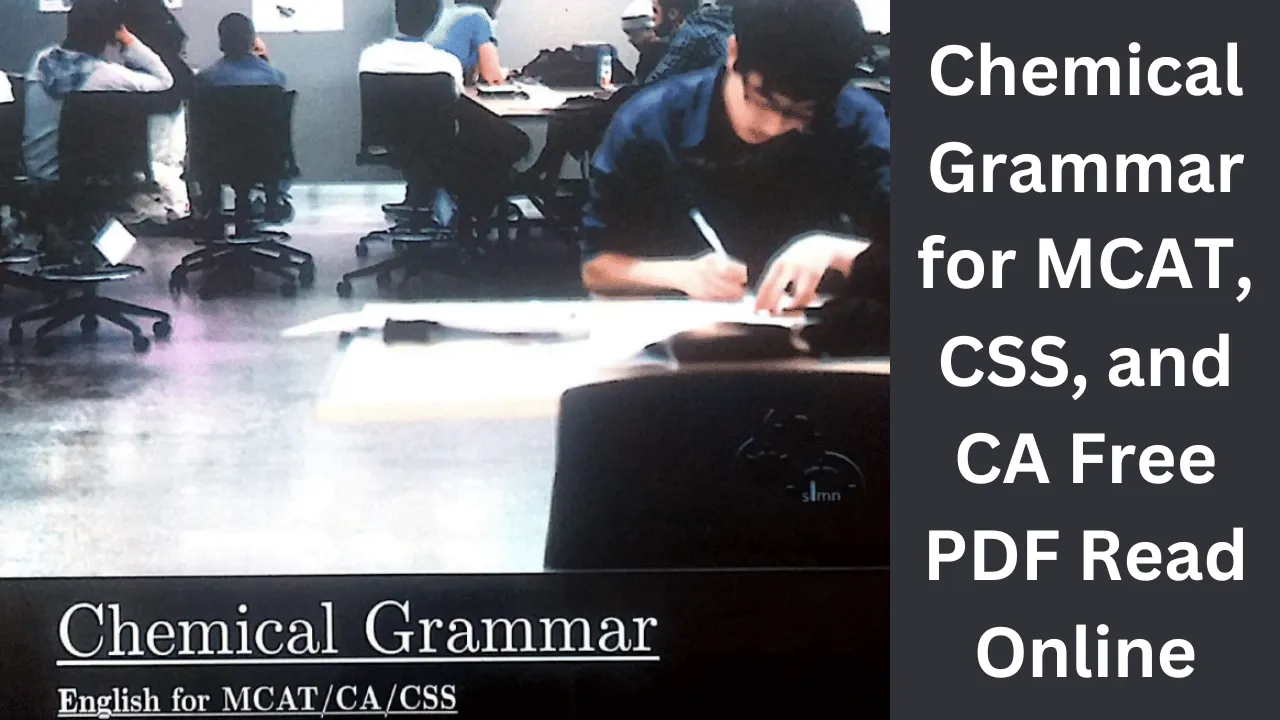
Introduction
Chemical grammar forms the backbone of chemistry knowledge, essential for standardized exams like the MCAT, CSS, and CA. Understanding the fundamental principles and terminology is crucial for success in these exams, as chemistry often poses challenging questions that test a student’s grasp of concepts and problem-solving abilities. This article explores the key areas of chemical grammar, providing a comprehensive guide to mastering the essentials.
Basic Chemical Terminology
Before diving into complex concepts, it’s important to grasp basic chemical terminology. Elements are pure substances consisting of only one type of atom, while compounds are made of two or more elements chemically bonded together. Mixtures are physical combinations of two or more substances. Understanding atomic structure, including protons, neutrons, and electrons, and navigating the periodic table are foundational skills.
Chemical Bonding
Chemical bonding explains how atoms combine to form compounds. There are three primary types of bonds: ionic (transfer of electrons), covalent (sharing of electrons), and metallic (sea of electrons around metal ions). Additionally, the shape of molecules, determined by molecular geometry, and the distribution of charge, which affects polarity, are crucial for predicting chemical behavior.
Chemical Reactions and Equations
Chemical reactions involve the transformation of reactants into products. Key types include synthesis, decomposition, single replacement, double replacement, and combustion reactions. Balancing chemical equations ensures the law of conservation of mass is upheld, indicating the same number of atoms of each element on both sides of the equation.
Also Check PU CSS-CSP Test Preparation Free PDF Read Online
Stoichiometry
Stoichiometry involves calculations based on the quantitative relationships between reactants and products in a chemical reaction. The mole concept and molar mass are pivotal, allowing chemists to convert between mass, moles, and number of particles. Understanding how to perform stoichiometric calculations is essential for solving chemical problems.
States of Matter
Matter exists in four states: solid, liquid, gas, and plasma. Each state has distinct properties and behaviors. Phase transitions, such as melting, boiling, and sublimation, occur when matter changes from one state to another, often influenced by temperature and pressure.
Thermochemistry
Thermochemistry studies the energy changes during chemical reactions. Enthalpy (heat content), entropy (disorder), and Gibbs free energy (spontaneity) are key concepts. Understanding how heat transfer occurs in reactions, measured by calorimetry, helps predict reaction feasibility and energy requirements.
Chemical Kinetics
Chemical kinetics focuses on reaction rates and the factors affecting them. The rate law expresses the relationship between reaction rate and concentration of reactants. Temperature, catalysts, and concentration are crucial factors that influence how quickly reactions proceed.
Chemical Equilibrium
Chemical equilibrium occurs when the rate of the forward reaction equals the rate of the reverse reaction. The equilibrium constant (K) quantifies the ratio of product to reactant concentrations. Le Chatelier’s principle predicts how systems at equilibrium respond to changes in concentration, temperature, or pressure.
Acids and Bases
Acids and bases are substances that donate and accept protons, respectively. The pH scale measures the acidity or basicity of a solution. Acid-base titrations involve adding a known concentration of base to an acid (or vice versa) to determine the concentration of the unknown solution. Buffer solutions help maintain stable pH levels in various chemical and biological systems.
Electrochemistry
Electrochemistry studies redox (reduction-oxidation) reactions and their applications. Electrochemical cells, such as galvanic and electrolytic cells, convert chemical energy into electrical energy or vice versa. Understanding the principles behind batteries and corrosion is vital for practical applications.
Organic Chemistry
Organic chemistry focuses on carbon-containing compounds. Hydrocarbons (alkanes, alkenes, and alkynes) and functional groups (such as alcohols, aldehydes, and carboxylic acids) are foundational. Basic organic reactions, including substitution, addition, and elimination, form the basis for understanding complex biochemical processes.
Biochemistry
Biochemistry bridges chemistry and biology, exploring the chemical processes within living organisms. Key biomolecules include proteins, carbohydrates, lipids, and nucleic acids. Enzyme kinetics and metabolic pathways are essential topics, highlighting how biochemical reactions are regulated and catalyzed.
Analytical Chemistry
Analytical chemistry involves techniques for identifying and quantifying chemical substances. Qualitative analysis determines the presence of specific ions or compounds, while quantitative analysis measures their concentration. Techniques such as spectroscopy (e.g., UV-Vis, IR) and chromatography (e.g., HPLC, GC) are widely used.
Environmental Chemistry
Environmental chemistry examines the chemical processes occurring in the environment and their effects. Understanding chemical pollutants, their sources, and impacts on ecosystems is crucial. Green chemistry principles aim to design processes that reduce or eliminate hazardous substances, promoting sustainability.
Also, Check JWT World Times Magazine May 2024 Read Online
Conclusion
Mastering chemical grammar is essential for success in exams like the MCAT, CSS, and CA. By understanding the fundamental principles and terminology, students can tackle complex problems with confidence. This guide provides a comprehensive overview of key concepts, offering a solid foundation for further study and application in chemistry.
FAQs
Q1: Why is chemical grammar important for standardized exams?
Chemical grammar provides the foundational knowledge and problem-solving skills necessary to tackle complex chemistry questions in exams like the MCAT, CSS, and CA.
Q2: What are the key types of chemical bonds?
The key types of chemical bonds are ionic, covalent, and metallic bonds, each involving different methods of electron interaction between atoms.
Q3: How do you balance a chemical equation?
To balance a chemical equation, ensure the same number of atoms for each element is present on both sides of the equation, adjusting coefficients as needed.
Q4: What is the mole concept in stoichiometry?
The mole concept relates the mass of a substance to the number of particles it contains, providing a bridge between the macroscopic and atomic scales in stoichiometric calculations.
Q5: What is the role of enzymes in biochemistry?
Enzymes act as catalysts in biochemical reactions, speeding up processes by lowering the activation energy required for reactions to occur.
Your article helped me a lot, is there any more related content? Thanks!